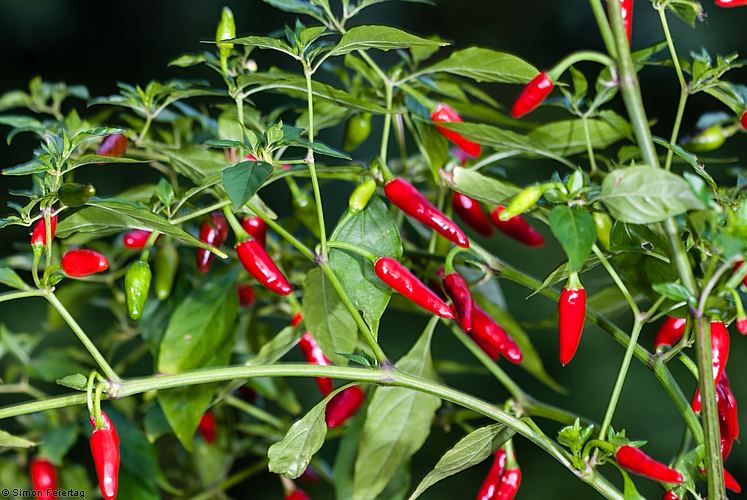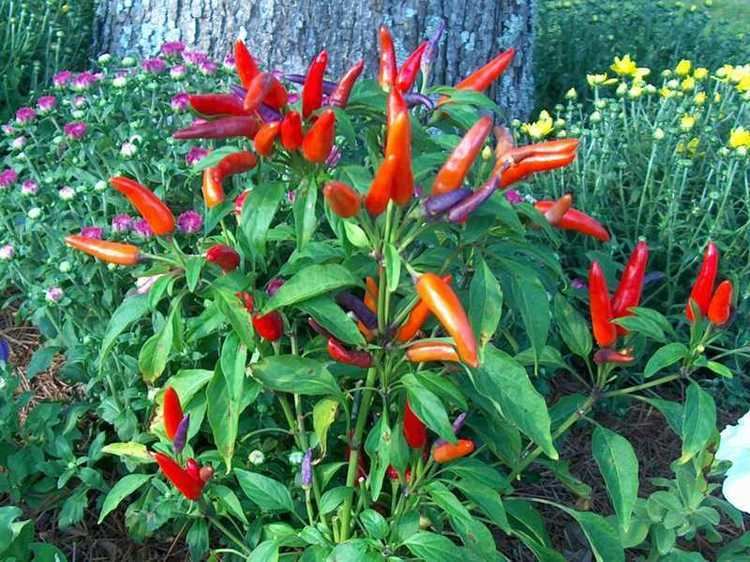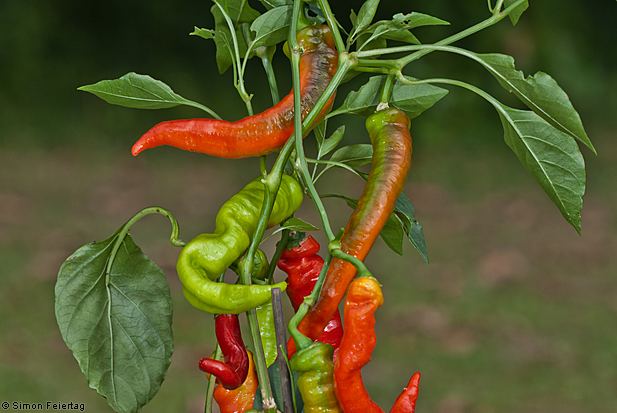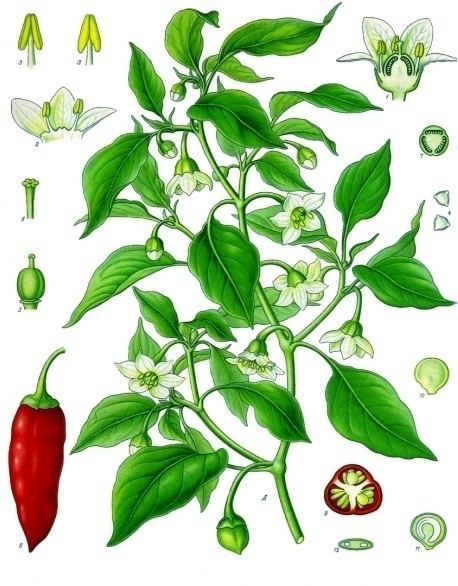Higher classification Peppers | Rank Species | |
 | ||
Lower classifications Bell pepper, Jalapeño, cayenne pepper, Poblano, Romanian pepper | ||
serrano chili hot pepper capsicum annuum plant review pepper
Capsicum annuum is a species of the plant genus Capsicum native to southern North America and northern South America. This species is the most common and extensively cultivated of the five domesticated capsicums. The species encompasses a wide variety of shapes and sizes of peppers, both mild and hot, ranging from bell peppers to chili peppers. Cultivars are descended from the wild American bird pepper still found in warmer regions of the Americas. In the past some woody forms of this species have been called C. frutescens, but the features that were used to distinguish those forms appear in many populations of C. annuum and it is not a consistently recognizable feature in C. frutescens species. Moreover, crosses between C.annuum and C. frutescens aren't likely because seeds obtained from polliations between those two species (if the embryo survives) will not germinate.
Contents
- serrano chili hot pepper capsicum annuum plant review pepper
- purple beauty bell pepper capsicum annuum plant review
- Characteristics
- Culinary
- Medicinal
- Ornamental
- References
purple beauty bell pepper capsicum annuum plant review
Characteristics

Although the species name annuum means “annual” (from the Latin annus “year”), the plant is not an annual and in the absence of winter frosts can survive several seasons and grow into a large perennial shrub. The single flowers are an off-white (sometimes purplish) color while the stem is densely branched and up to 60 centimetres (24 in) tall. The fruit are berries that may be green, yellow or red when ripe. While the species can tolerate most climates, C. annuum is especially productive in warm and dry climates.
Culinary

The species is a source of popular sweet peppers and hot chilis with numerous Varieties cultivated all around the world.

Common naming in English falls generally in line with the flavor and size of the variant. Larger, sweeter variants are called sweet peppers in Great Britain, and red or green peppers, or "bell peppers" in the United States. The smaller, hotter varieties are called chillis, chilies, chile, or chili peppers.
Capsinoid chemicals provide the distinctive tastes in C. annuum variants. In particular, capsaicin creates a burning sensation ("hotness"), which in extreme cases can last for several hours after ingestion. A measurement called the Scoville scale has been created to describe the hotness of peppers and other foods.
Medicinal
Hot peppers are used in medicine as well as food in Africa and other places around the world.
English botanist John Lindley described C. annuum on page 509 of his 1838 'Flora Medica' thus:
In ayurvedic medicine, C. annuum is classified as follows:
Ornamental
Some cultivars grown specifically for their aesthetic value include the U.S. National Arboretum's Black Pearl and the Bolivian Rainbow. Ornamental varieties tend to have unusually colored fruit and foliage with colors such as black and purple being notable. All are edible, and most (like Royal Black) are hot.
